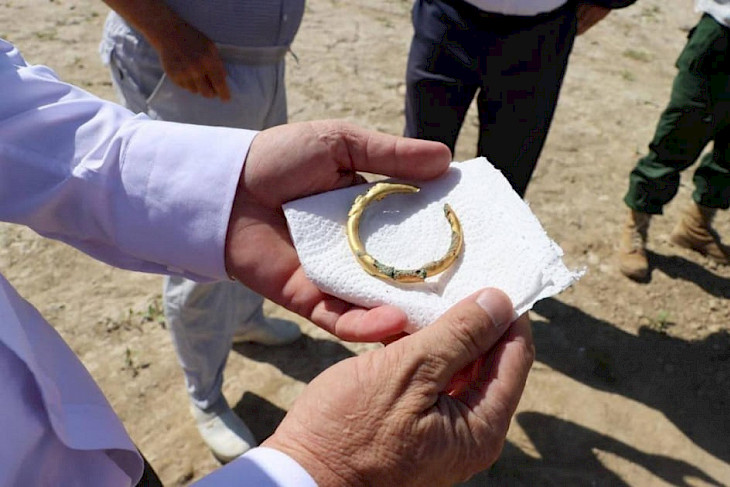Kazakhstan’s Ministry of Science and Higher Education has announced major archaeological discoveries made possible by the extreme shallowing of the Bogen Reservoir in the Turkistan region, reports AzerTAg.az.
Within a week of intensive research, archaeologists uncovered a multilayered historical site containing artifacts dating from the Stone Age to the ancient period. Finds include stone tools from the Late Paleolithic and Mesolithic (8,000–10,000 years old), Bronze Age burials with unique ceramics and ornaments, and a warrior’s grave from the Kangly-Sarmatian period (1st century BC – 1st century AD) with a full set of weapons.
The most striking discovery was an undisturbed Sarmatian warrior burial with a complete weapon set: three iron arrowheads with preserved shafts, a combat knife with a bone handle, a belt buckle with ornamentation, and a red clay vessel for ritual libations. The preservation of organic materials (wood, leather) in the silt deposits allows for highly accurate radiocarbon dating.
This discovery radically changes previous conceptions of the region’s history. It was long believed that intensive human activity here began no earlier than the Middle Ages. The newly uncovered ancient and diverse artifacts demonstrate that the valley was continuously inhabited for at least 10,000 years, serving as an important crossroads of migration and trade routes between Central Asia, Southern Siberia, and the Urals.
CentralasianLIGHT.org
September 8, 2025

